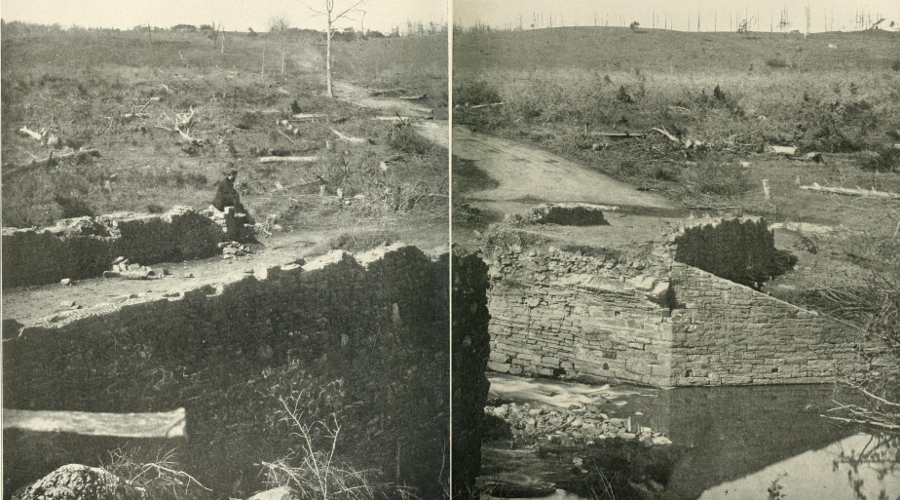
the Warrenton-Alexandria Turnpike bridge over Bull Run was burned by Federal forces retreating after the First Battle of Manassas in 1861
Source: The Photographic History of the Civil War, Ruins of the Stone Bridge - Bull Run, Virginia (pp.138-139)

the Warrenton-Alexandria Turnpike bridge over Bull Run was burned by Federal forces retreating after the First Battle of Manassas in 1861
Source: The Photographic History of the Civil War, Ruins of the Stone Bridge - Bull Run, Virginia (pp.138-139)
The Union Army that attacked the Confederates at Manassas in July, 1861 was green. Lincoln told his commander to attack anyway, since the Confederates were equally untrained. In the first part of the battle at Manassas, Union General Irvin McDowell's forces were successful at pushing forces of Confederate General P. G. T. Beauregard off Mathews and Buck Hill.
By noon, the Union Army appeared to be able to march to the railroad junction and on to Richmond, ending the efforts of southern states to secede and allowing restoration of the Union - without ending slavery. However, McDowell took too long to organize his forces and then attacked the Confederates "standing like a stone wall" regiment by regiment, rather than with larger units.
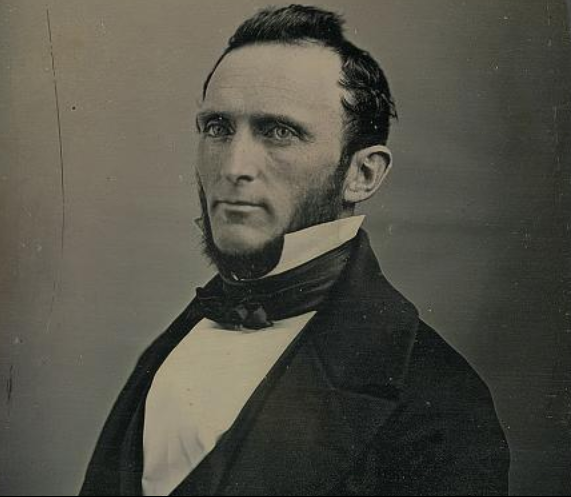
Thomas Jonathan Jackson gained his "Stonewall" nickname six years after having his portrait taken in 1855
Source: Smithsonian Institution, National Portrait Gallery, Stonewall Jackson by H. B. Hull
Confederate reinforcements arrived on the Manassas Gap Railroad, and the Confederate generals were effective at getting them into battle. In the late afternoon on July 21, 1861, the Federal forces on Chinn Ridge started to retreat. By the time the sun had set, the Union Army was in a chaotic retreat to Alexandria.
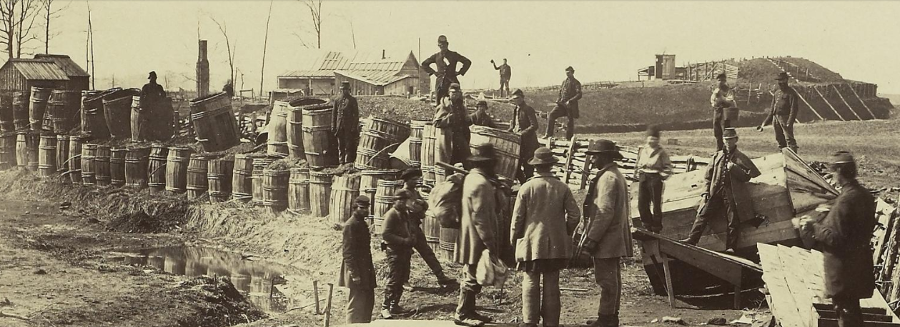
in March 1862, the Confederates abandoned their fortifications at Manassas and Union forces occupied the railroad junction
Source: Smithsonian Institution, Plate 11. Fortifications at Manassas (Gardner's Photographic Sketchbook of the War, Vol. II)
The Confederates were as disorganized by victory as the Federals were by defeat, so there was no pursuit east of Centreville. Both sides spent the rest of 1861 organizing more troops than had ever been assembled in any previous American army, and fighting was minimal. Wilmer Mclean chose to move his family from Manassas to Central Virginia, to avoid being caught on a battlefield again. He moved to Appomattox Court House.
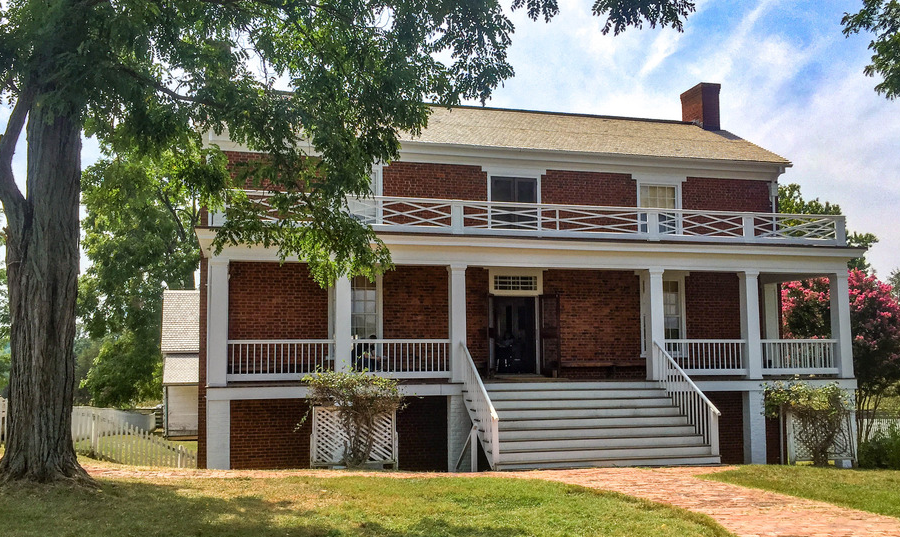
after First Manassas, Wilmer Mclean moved his family from the front lines at Manassas to this house in presumably-safe Appomattox Court House
Source: National Park Service / Victoria Stauffenberg, Appomattox Court House National Historical Park
An attempt by Union forces to cross the Potomac River at Balls Bluff near Leesburg in October, 1861 resulted in a clear Confederate victory. The number of troops involved was tiny, but the victory increased Confederate morale and expectations of victory in a second "war of independence" comparable to defeat of the British in the American Revolution.
The Federal government implemented Gen. Winfield Scott's "Anaconda Plan," blockading ports to prevent export of cotton and tobacco and import of military supplies from Europe. That approach would not result in quick results, but was expected to gradually deprive the Confederacy of rifles, cannon, gunpowder, and all sorts of other supplies needed to support the rebels.
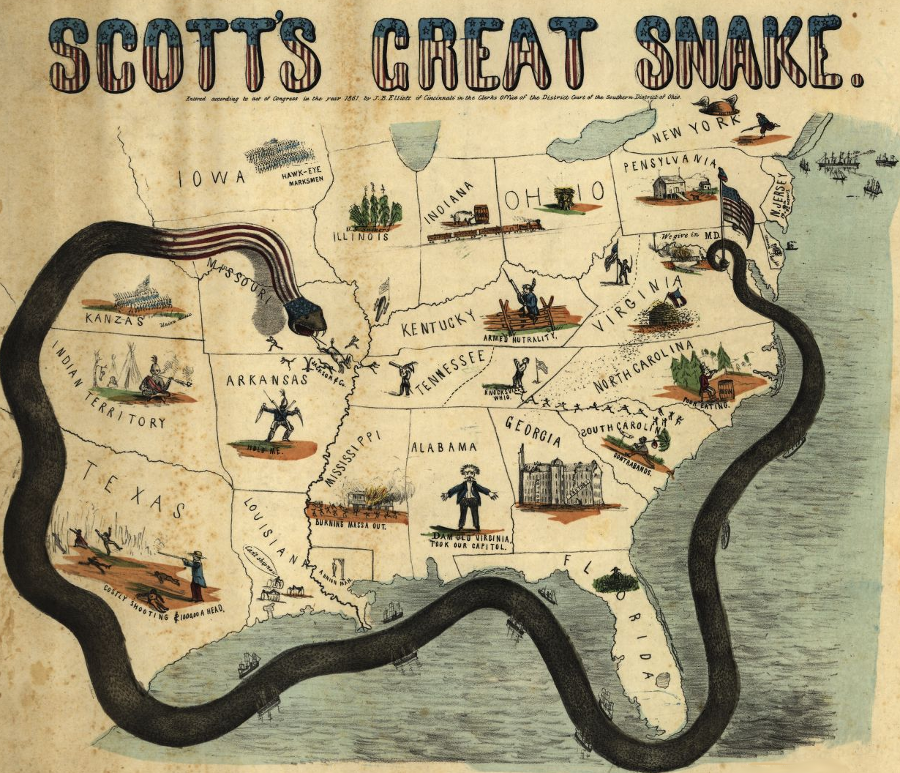
the Anaconda Plan assumed a long-term conflict in which Confederate resources would be exhausted, rather than quick victory
Source: Library of Congress, Scott's great snake (by J. B. Elliott, 1861)
Fighting during the winter of 1861-62 was limited by the focus on organizing large armies, and by the impact of winter. Horses provided the primary transportation for hauling military supplies and artillery, and horses needed grass in pastures to refuel. An army marches on its stomach, including the stomach of its transportation machinery. In the winter of 1861-62, when pasture grass was scarce and hay for horses was difficult to haul, an army in the Civil War could not march far, especially over muddy roads that bogged down supply wagons and cannon.
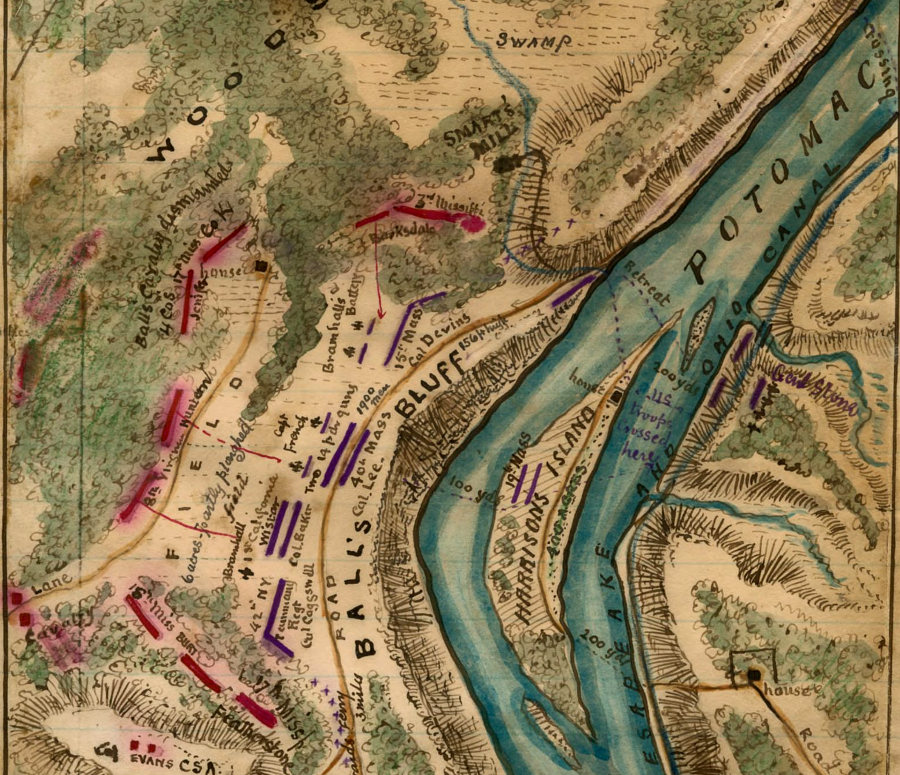
a minor Confederate victory at Balls Bluff near Leesburg in October, 1861 demonstrated Union incompetence and raised Southern morale
Source: Library of Congress, Plan of the Battle of Ball's Bluff Va. Fought October 21st 1861 by Robert Knox Sneden
By October, 1861, the Confederate politicians and generals were in public disagreement as they tried to assign the blame for the lost opportunity to seize Washington after First Manassas. At that time, the Confederates had outposts on Munson and Union hills in Arlington, and forces based at Fairfax Courthouse.
Confederates even placed enough cannon on the Virginia shoreline to block ships from sailing past modern-day Leesylvania State Park.
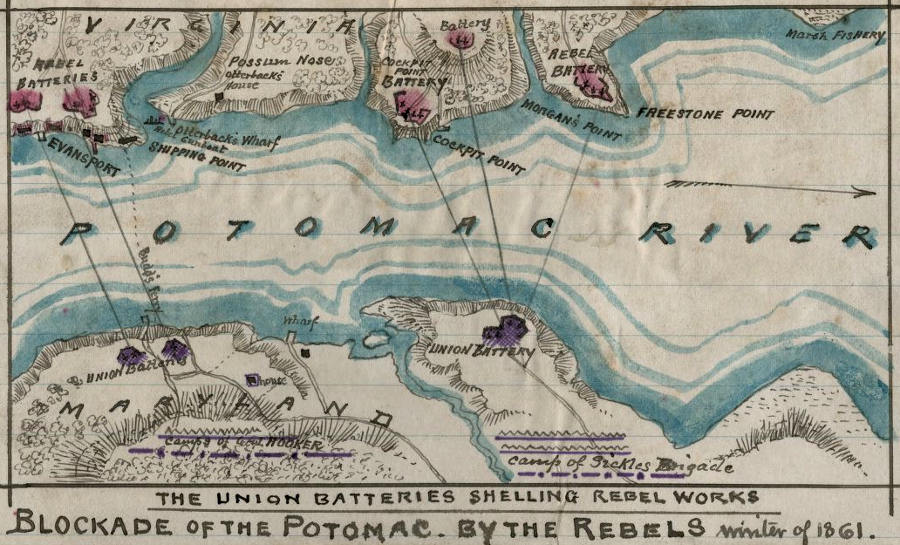
because the Potomac River's deep shipping channel was near the Prince William County shoreline, cannon located on the bluffs could block ships from reaching Washington, DC
Source: Library of Congress, Blockade of the Potomac - by Rebels, winter of 1861 by Robert Knox Sneden
The threat of cannon fire cut the river supply line, forcing the Union Army to get most of its supplies via the one rail line connecting Washington with Baltimore.
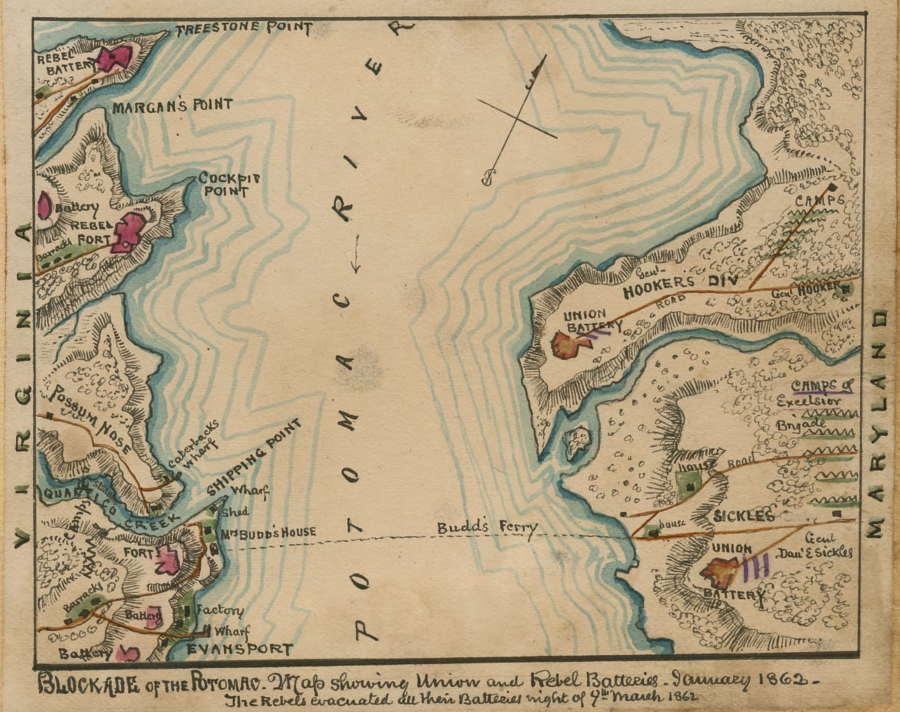
Confederates blockaded the Potomac River in the winter of 1861-62, until the northern defense line based on the Occoquan River was abandoned and forces moved to protect Richmond against McClellan's Peninsula Campaign
Source: Library of Congress, Blockade of the Potomac. Map showing Union and Rebel batteries January 1862 (by Robert Knox Sneden)
With wet weather in October 1861, the logistics of supplying the Confederate front lines grew worse. The army moved its front lines back to Centreville. The Union built forts in Alexandria an Fairfax counties, creating a line of defense to block a Confederate attack on Washington, DC.
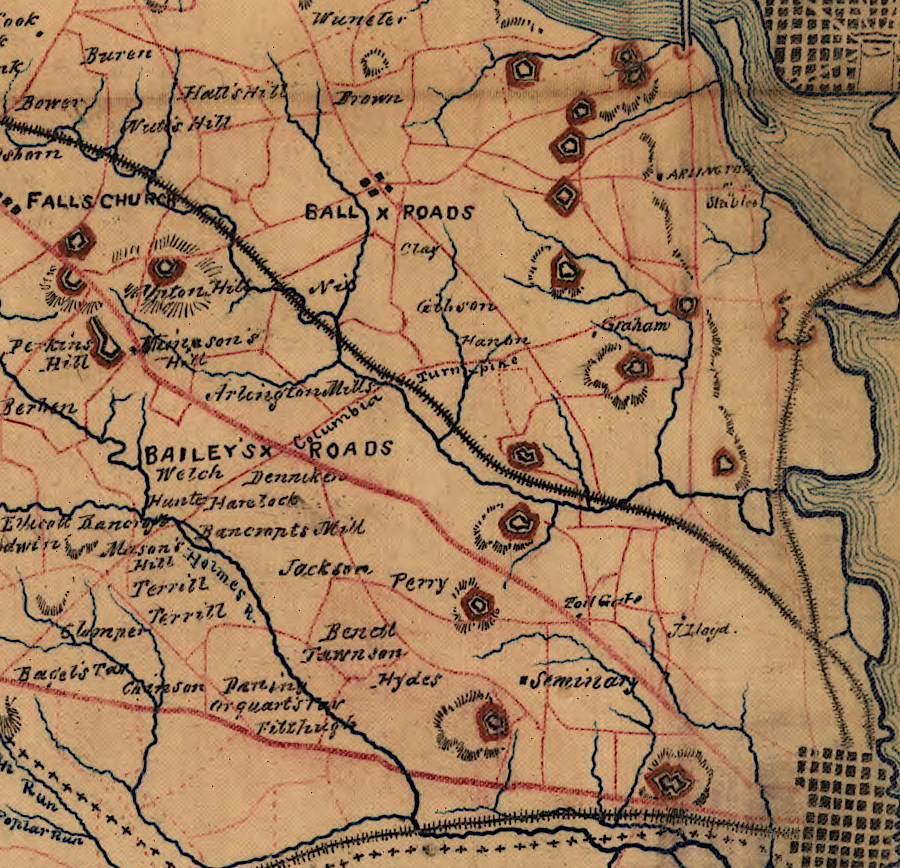
after First Manassas, the Union army built a defensive line of forts that circled Washington to blunt any Confederate attack
Source: Library of Congress, Map of portions of Virginia and Maryland, extending from Baltimore to Strasburg (186__)
In the winter of 1861-62, Centreville was a long wagon haul from the railroads at Manassas Junction. To supply the front lines, the Confederates built the first railroad purely for military purposes in November 1861-February, 1862. The Centreville Military Railroad crossed Bull Run and climbed the hill. Ultimately, that railroad reached what today is a McDonalds located on Route 28 at the southwest edge of the modern interchange with Route 29.
The Orange and Alexandria Railroad and the Manassas Gap Railroad brought supplies and troops to Manassas Junction. Troops were initially stationed at other locations in Virginia until they were "seasoned," or past the stage when soldiers from isolated rural areas in the South were likely to become disabled by their first exposure to communicable diseases such measles. Confederate encampments were scattered along Bull Run from the town of Occoquan upstream to Centreville, stretching to the modern location of the Manassas campus of Northern Virginia Community College.
Modern relic hunters know that encampments are likely locations for valuable buttons, belt buckles, bullets, etc. Battlefields were occupied for only a day or two, typically, but far more equipment was discarded at encampments that were occupied for months.
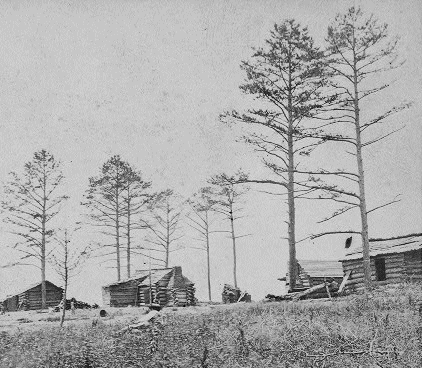
Confederate Barracks at Manassas
Source: Civil War Treasures from the New-York Historical Society
Behind the lines, Confederate warehouses were built at Manassas Junction. Chapman (Beverly) Mill in Thoroughfare Gap, at the border of Prince William and Fauquier counties, also served as a supply depot. Over one million pounds of meat were stored there in the winter of 1861-62 to feed the Confederate Army.
The Confederate defense line along Bull Run appeared too strong to the General George McClellan, the Federal officer who replaced General Irvin McDowell. McClellan was charged with the responsibility of capturing Richmond, just like Irvin McDowell, but McClellan identified another route to Richmond.
To bypass the Bull Run defenses, McClellan sent the Union Army down the Potomac River to Fortress Monroe, then marched up the Peninsula past Williamsburg to Richmond. The 1862 Peninsula Campaign relied upon Union ships, rather than captured Confederate railroads, as the mechanism to supply the invading army.
The Confederate response to McClellan's march up the Peninsula was a dramatic reduction of forces in Northern Virginia, in order to expand the defensive capacity near Richmond. Confederate cannon in forts at Centreville and along Bull Run were withdrawn and sent south. In some cases "Quaker guns" (tree trunks disguised to look like cannon barrels) were substituted to obscure the reduced capabilities of the Confederate defenses.

in 1862, fake cannon made from tree trunks were installed in Confederate forts near Centreville and the real cannon were shifted to Richmond, in response to the Union Army's Peninsula Campaign
Source: National Archives and Records Administration "Pictures of the Civil War," Confederate "Quaker" guns-logs mounted to deceive Union forces-in the fortifications at Centreville, Va.
Confederate troops were withdrawn quickly with little advance planning; the general staff of the Confederacy was small and unable to cope with the challenge. Because the withdrawal was rapid, the Confederate railroad system was unable to carry supplies as well as troops from Northern Virginia to Richmond. The extraordinary Confederate effort to stockpile supplies since First Manassas near Centreville, to supply troops on the front lines, required a massive destruction effort in late February 1862 to prevent those same supplies from being useful to the Yankees.
After the shift of Confederate forces to Richmond at the beginning of March, 1862, Union forces occupied the rest of Northern Virginia. moved south to establish a new front line on the Rappahannock River in Stafford County near Fredericksburg. Further west, the Union Army crossed the Rappahannock River and set its new line on the northern bank of the Rapidan River.
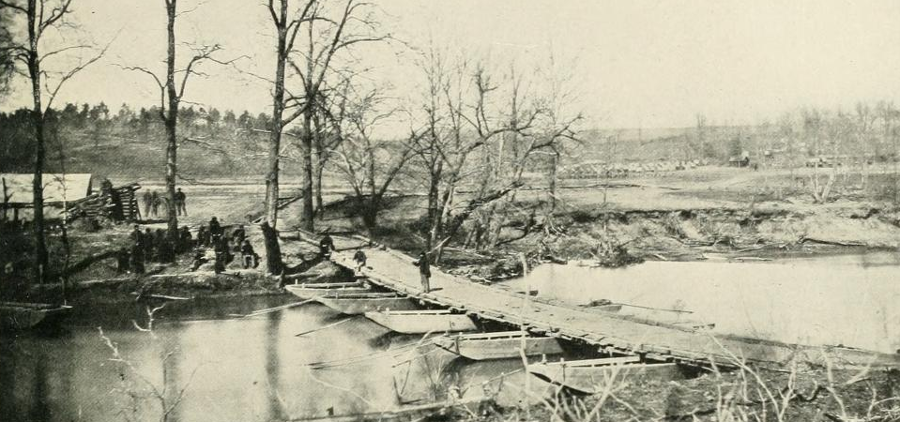
Federal forces occupied the Manassas area after Confederates retreated in March,1862, and built pontoon bridges to facilitate crossing Bull Run south of Centreville
Source: The Photographic History of the Civil War, Prelude to the Combat - Blackburns Ford (p.150)
More warehouses were built at Manassas Junction, this time by the Union. A small settlement began to emerge at a massive supply depot that had been empty farmland until the Manassas Gap Railroad was linked there to the Orange and Alexandria Railroad in 1857. After March 1862, US Military Railroad trains ran regularly on the Orange and Alexandria Railroad tracks to supply food, hay, ammunition, and fresh troops from Alexandria to the new Union front line on the Rappahannock River in Culpeper County.
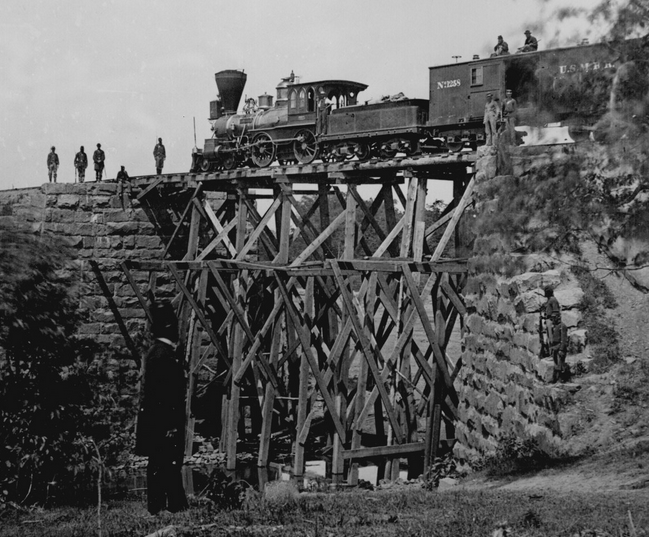
in the summer of 1862, wood-burning locomotives of the US Military Railroad used the Orange and Alexandria (O&A) tracks to supply Union forces as far south as Culpeper County
Source: National Archives and Records Administration "Pictures of the Civil War," The engine "Firefly" on a trestle of the Orange and Alexandria Railroad
Northern Virginia did not escape further fighting after Confederate troops marched south to defend Richmond during McClellan's Peninsula Campaign. The Confederate Army returned in August, 1862.
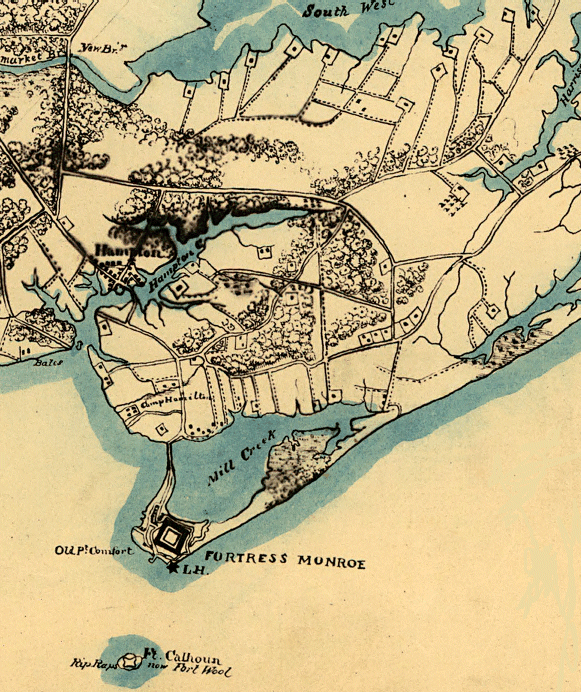
The Northern forces did not surrender Fortress Monroe after Virginia seceded,
and it served as a key military base throughout the Civil War.
(Fort Calhoun was renamed Fort Wool by the North, to avoid honoring
the former Secretary of War from South Carolina who became a "fire-eating" advocate of secession.)
Source: Library of Congress
Confederate General Robert E. Lee took the initiative, after the Seven Days battles on the eastern edge of Richmond blocked McClellan. Lee divided his army, which he titled the Army of Northern Virginia, and headed north.
He left a small force east of Richmond, and sent the majority of his troops west of Richmond and up to the Rapidan River. Lee hoped to trap the Union between the Rapidan and Rappahannock rivers, but Union scouts spotted the Confederate movements. The Northern forces retreated back to the Rappahannock River, and then further back towards Centreville. However, Stonewall Jackson' fast-marching infantry corps (called "foot cavalry") crossed the Rappahannock River in Fauquier County, snuck behind the Union Army's front lines, marched east through Thoroughfare Gap, and captured the Union supply depot at Manassas.
After a confusing set of movements, both sides ended up back at the site of the first battle of Manassas. General Pope, the Union commander, failed to recognize that both corps of Lee's army were on the battlefield. Pope focused exclusively on General Stonewall Jackson's Corps, fighting along an abandoned railroad line - allowing General Longstreet to attack an undefended portion of the battlefield and force the Union Army to retreat.
Once again the Union soldiers fled down the Warrenton-Alexandria Turnpike (modern Route 29) towards Washington, DC. This time, the Confederates were still capable of attack.
Stonewall Jackson raced up Gum Springs Road to the Little River Turnpike (modern US 50), then turned east and intercepted the tail of the retreating Union Army near what today is Fair Oaks Mall. The two sides fought until an afternoon thunderstorm and nightfall allowed the Union to break away and successfully withdraw to the protection of the circle of military forts around Washington, DC.
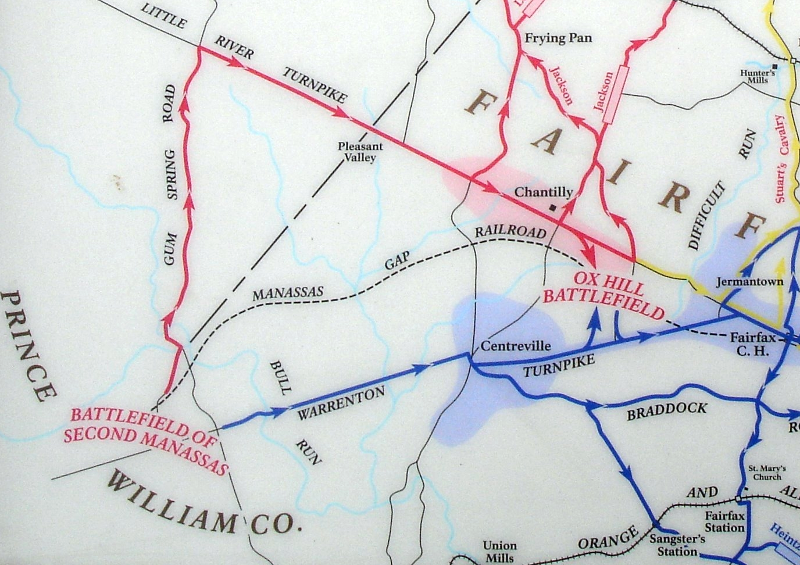
paths of Confederates (in red) and Union (in blue), from Second Manassas battlefield to Ox Hill
Source: Historical Markers Database, The Battle of Ox Hill
In September 1863 after Ox Hill, Lee had four options:
- attack Washington, despite the circle of strong forts surrounding it
- stay in Northern Virginia, where food and supplies had been exhausted
- withdraw to south of the Rappahannock River where supplies were available, but abandoning the Virginia territory recaptured by Lee's bold initiative after the Peninsula Campaign
- invade the North
Lee, in consultation with Confederate President Jefferson Davis, crossed the Potomac River into Maryland. He may have hoped for an easy march as far as the Susquehanna River, where he could burn the Pennsylvania Railroad bridges. A successful northern campaign, before the Congressional elections to the US Congress, would increase pressure on President Lincoln to negotiate a peaceful end of the war and allowing southern secession to succeed.
Instead, General McClellan reorganized the Union Army and blocked Lee's advance. Their battle at Antietam Creek was a draw, but Lee withdrew back into Virginia. That emboldened Lincoln to issue the Emancipation Proclamation, expanding the war aims beyond restoring the Union and adding the objective to end slavery.
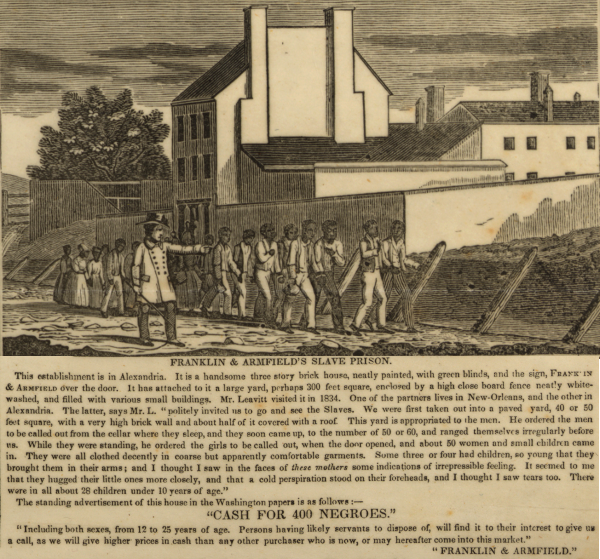
prior to the Union occupation of Northern Virginia, the Franklin & Armfield slave pen was at 1315 Duke Street in Alexandria
Source: Library of Congress, Slave market of America (1836)
In the winter of 1862-63, John Mosby organized a battalion and initiated partisan warfare behind the lines in Union-occupied Northern Virginia and the Shenandoah Valley. Mosby's Rangers were successful in blocking Union troops from being sent to the front lines, and also blocked re-opening of the Manassas Gap and the Orange and Alexandria railroads for Union use in late 1864.
In October 1863, Lee tried to repeat his maneuvers of the 1862 Second Manassas campaign. Once again he sent his forces west, around the right flank of the Union Army on the Rappahannock River. By this time Stonewall Jackson was dead, so Confederate General A. P. Hill commanded the march eastward down modern Linton Hall Road in Prince William County to the railroad at Bristoe (now spelled Bristow). However, the Union forces were far stronger than expected. After the Battle of Bristoe Station, General Robert E. Lee acknowledged to General A. P. Hill that the Confederates had been defeated, saying simply "Well, well, General, bury these poor men, and let us say no more about it."1
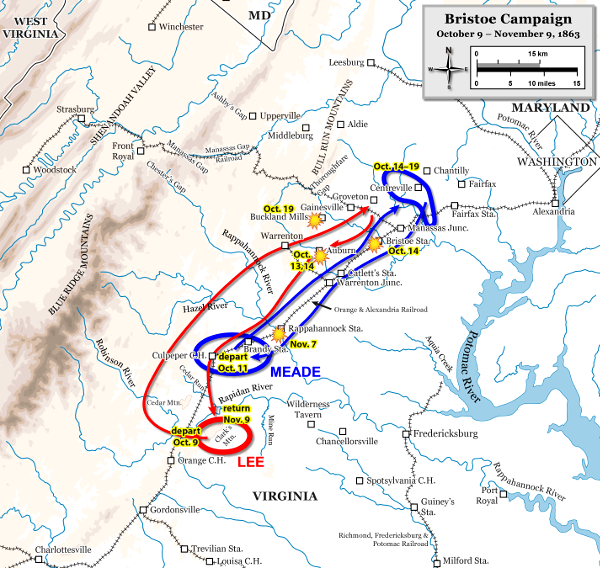
in the 1864 Bristoe Campaign, Confederate troops tried to sneak around the right flank of Union forces on the Rappahannock River, but this time the result was a Confederate defeat
Source: Map by Hal Jespersen, www.cwmaps.com, Bristoe Campaign
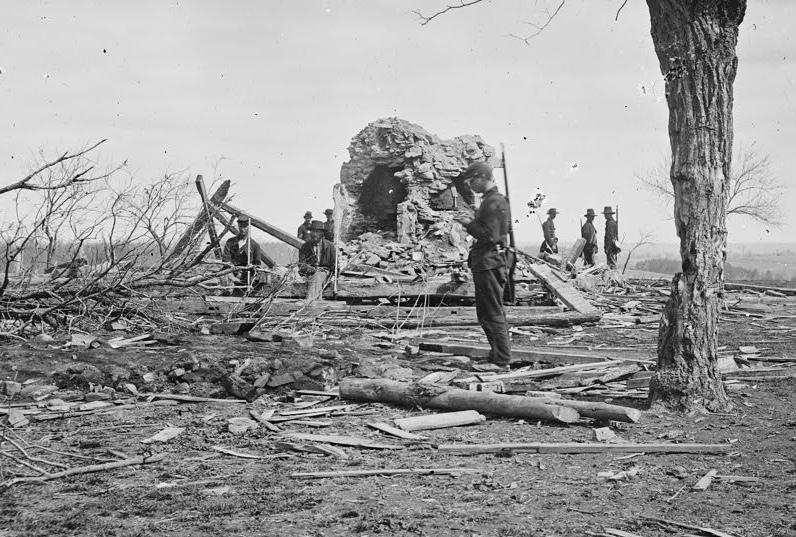
Confederate soldiers needing heat and shelter removed all the wood from the Henry House by March, 1862
Source: Library of Congress, [Bull Run, Va. Ruins of Mrs. Judith Henry's house]